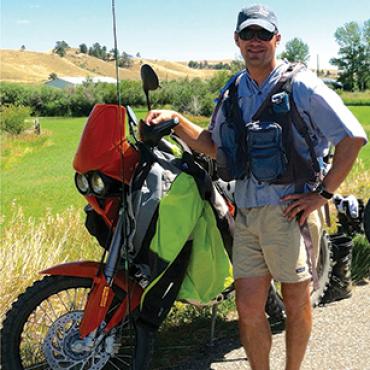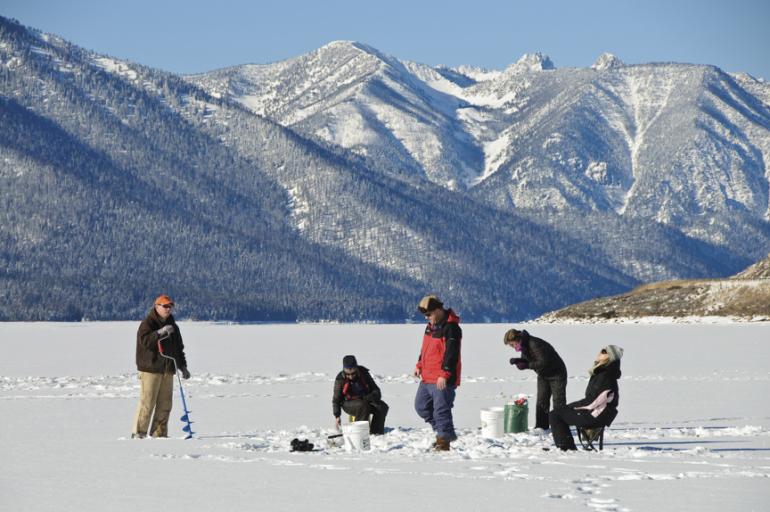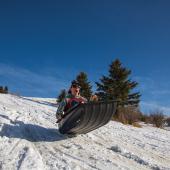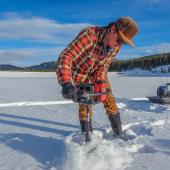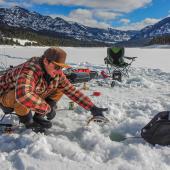Break the Ice
The true force behind ice fishing is that it is better than no fishing at all. –Jim Harrison, “Ice Fishing, the Moronic Sport”
While many agree with the sentiments of Mr. Harrison, it’s worth considering that winter fishing, whether by means of a hand-tied #22 midge, a shiny chrome “Swedish pimple,” or a live minnow, has an appeal all its own, with the power to make anglers covet its unique excitements, challenges, frustrations, and tranquilities.
First, anglers should know that, along with most of the state’s primary rivers, Montana law allows angling on some of the region’s private spring creeks all year long. Thus, Depuy’s, Armstrong’s, and Nelson’s Spring Creeks in Paradise Valley remain open throughout the wintry months. Even better, these creeks offer reduced rates for anglers brave enough to ply their waters at this forbidding time of year—sometimes by as much as 60%. Also check out the options available to obtain seasonal winter passes for public streams.
If spending money for private access isn’t in your budget, don’t despair. Though the water temperatures may differ considerably, the solitude found on spring creeks (one of the true pleasures of winter fly fishing) can also be found on your favorite rivers around the region. Look for fish in quiet pools and slow currents, and fish deep, dead-drifting small buggers or streamers with trailing nymphs; or go simply for a nymph rig minus anything too obscene. Winter midging—a true delight—is best on snowy days that are just below freezing. Winter can also produce some phenomenal dry-fly fishing. Think like a fish. It’s cold and they’re conserving energy; therefore, they want to swim as little as possible and obtain the most food. Plan your angling strategy accordingly. And wear boot-foot waders if you have them, with plenty of room for extra socks. Your feet will thank you.
When the temperatures don’t climb out of the single digits for three weeks, it’s time to savor the joys of walking out onto a frozen lake and drilling a small hole in which to sink bait and pull unsuspecting fish from the dark place beneath your feet. Though you can release your catch, ice fishing is not generally a “catch and release” sport. And that’s fine, because it typically takes place on reservoirs that FWP stocks each year. Consequently, it’s a wonderful opportunity to freeze fish that will, perhaps months later, find their way onto the grill or into the poaching pan or smoker, for you to enjoy with Brie and a good bottle of Cabernet.
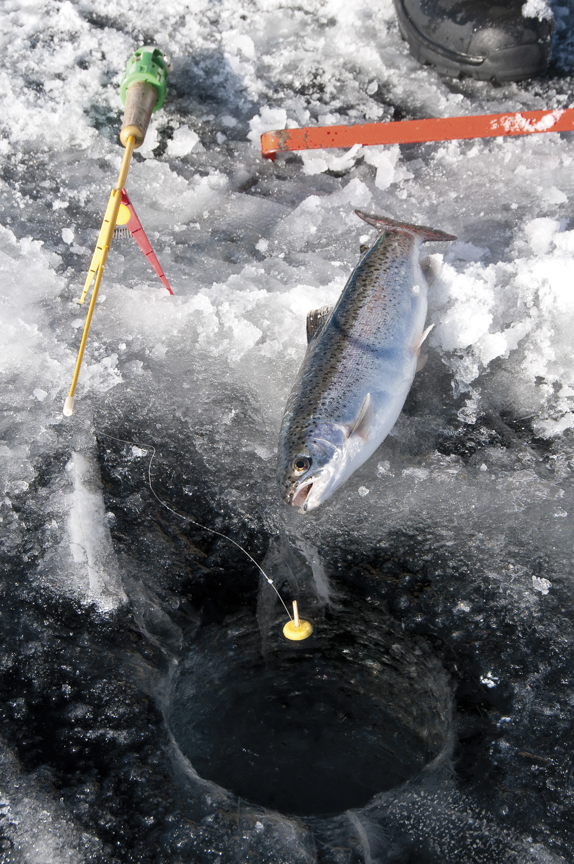
Along with the culinary delights ice fishing provides, it likewise supplies a ready cure for cabin fever by offering outdoor adventure when a trip to Belize, Christmas Island, or southern Florida is simply not an option. Finally, the most enjoyable aspect of gathering around a hole on the ice in frigid temperatures for the ostensible purpose of catching a fish may be the social element of the affair. A “shanty” (some of which can take on the proportions of a luxury apartment complete with a T.V. and satellite dish) is a pleasant indulgence but certainly not necessary.
Favorite ice-fishing locales include Canyon Ferry for perch, walleye, trout, and the occasional burbot; Dailey Lake in Paradise Valley for perch and trout; and Hebgen Lake for exceptional trout fishing. Of course, once you’re hooked on this particular type of angling, opportunities abound to explore more “exotic” waters such as Fort Peck Reservoir, Nelson Lake, and Sealy Lake, where the ancient art of spearing northern pike the size of small pigs is still enthusiastically practiced with shocking results. Good luck and bon appétit!

